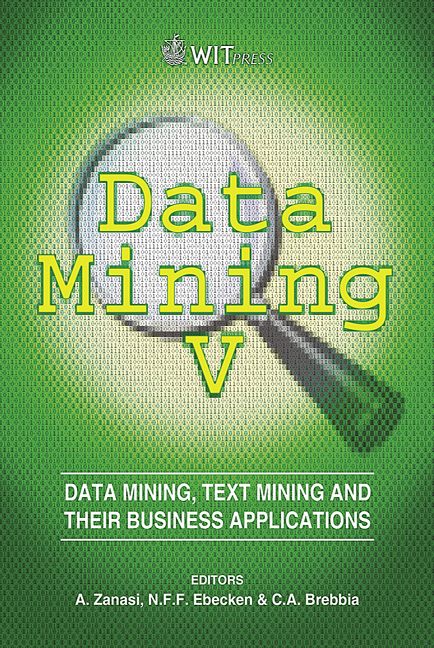Fuzziness As A Recognition Problem: Using Decision Tree Learning Algorithms For Inducing Fuzzy Membership Functions
Price
Free (open access)
Volume
33
Pages
11
Published
2004
Size
320 kb
Paper DOI
10.2495/DATA040141
Copyright
WIT Press
Author(s)
O. Nykänen
Abstract
In this article we establish a new method for inducing fuzzy set membership degrees based on empirical training data. The approach is founded on the notion of Redundant Decision Trees (RDT), a generalisation of regular crisp Decision Trees (DT). RDTs suffice in capturing the attribute tests required for recognising crisp concepts, from which the related fuzzy concepts may be unambiguously derived. Potential applications of this method include categorisation and the semiautomatic construction and the statistical evaluation of fuzzy concepts. In addition, since the definition of the membership degrees is effectively based on a robust DT machine learning algorithm, the induced fuzzy membership functions generalise. Thus, with certain assumptions, they output sensible membership degrees of previously unseen objects. In addition to introducing and analysing the basic definitions and algorithms, we briefly evaluate their applicability with examples and present some remarks concerning the scope of the approach. Keywords: fuzzy sets, decision trees, machine learning, empirical categorisation. 1 Introduction Many of the practical problems of implementing intelligent systems are related to recognition and qualification problems. In short, the recognition problems make it difficult to evaluate the state of the world, while the qualification problems, partly because of the recognition problems, make it hard to define the circumstances under which a given action is guaranteed to work [12]. These problems become concrete when implementing fuzzy systems based on empirical data sets. By definition, fuzzy systems tolerate imprecision by operating with fuzzy concepts (sets). Roughly speaking, there exists two
Keywords
fuzzy sets, decision trees, machine learning, empirical categorisation.





